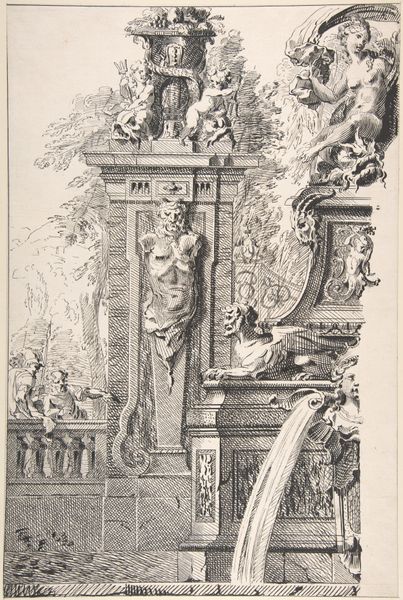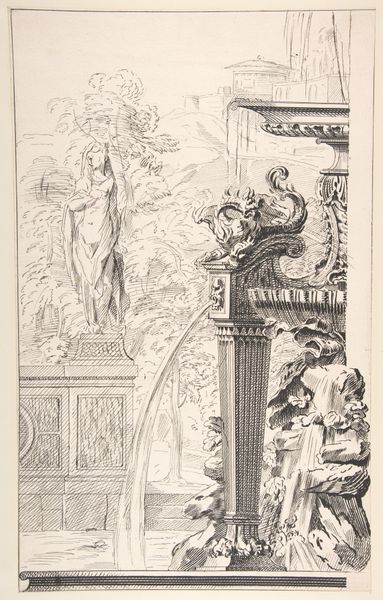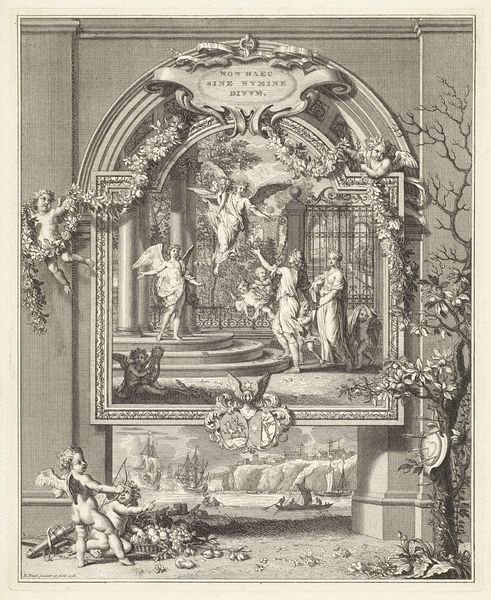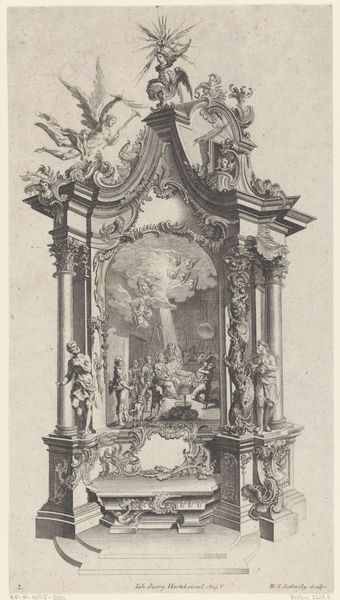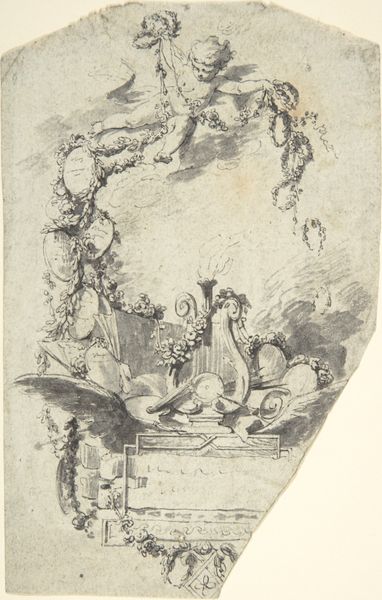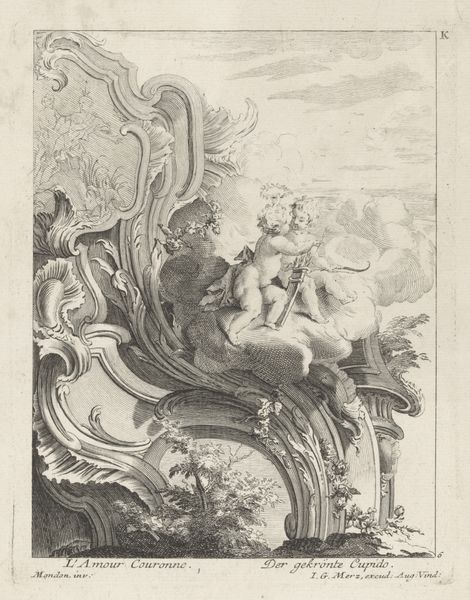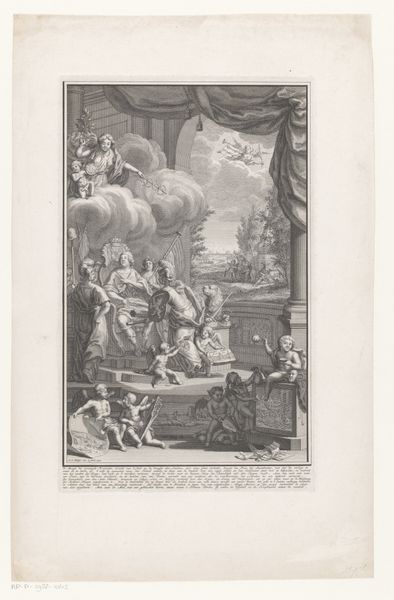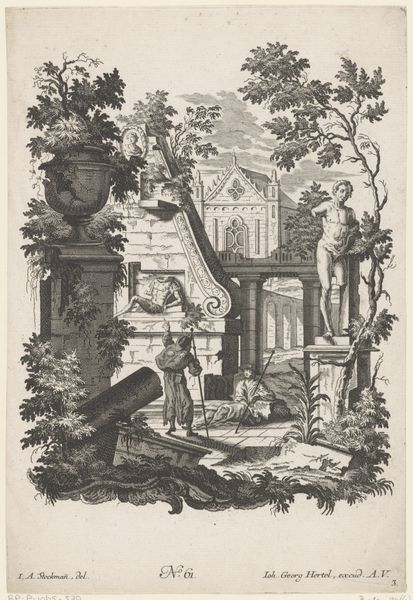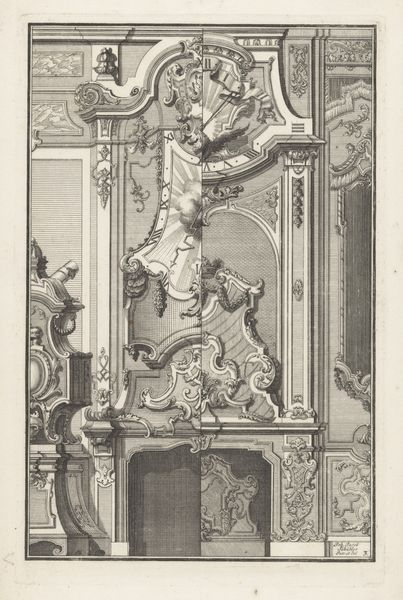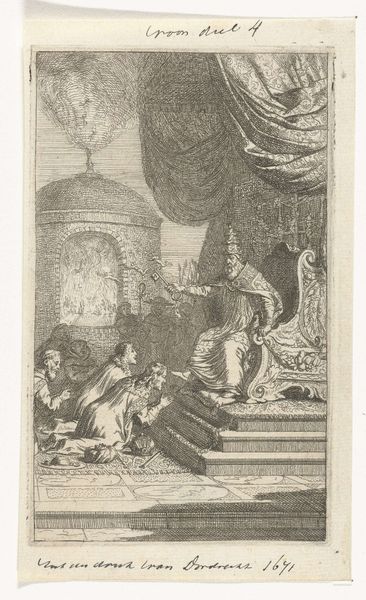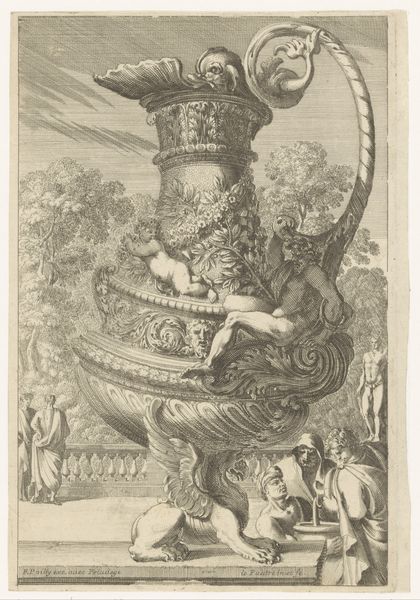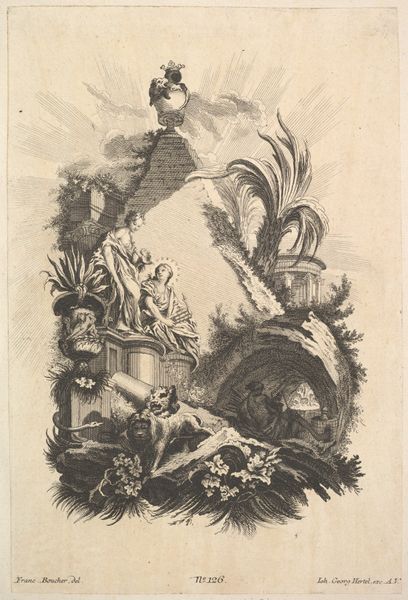
drawing, print, etching, ink, architecture
#
drawing
#
ink drawing
#
baroque
#
pen drawing
# print
#
etching
#
landscape
#
form
#
ink
#
geometric
#
line
#
cityscape
#
architecture
Dimensions: 17 1/4 x 9 1/2 in. (43.8 x 24.1 cm)
Copyright: Public Domain
Editor: Here we have Gilles-Marie Oppenord's "Study for a Garden Capriccio," dating sometime between 1685 and 1742. It's an ink drawing, or perhaps even a print. The level of detail is astonishing! What do you see in this piece, particularly regarding its recurring visual themes? Curator: I see a fascinating interplay of forms—geometric versus organic, natural versus man-made. The cityscape melds with the landscape, the rigidity of the architecture softened by the whimsical foliage and figures. Notice the dolphins; creatures of transformation and duality, mediating between the realms of water and air. Editor: Yes, the dolphins really stand out! And that contrasts so sharply with the formal architecture in the background. Curator: Precisely. These "capricci," or architectural fantasies, were quite popular then. Oppenord is exploring memory. The past is not accurately remembered and the capriccio reminds us that things are embellished. It's not enough to draw accurate plans. They aren't emotionally engaging. By incorporating those symbols –dolphins and other allusions to mythology, for example—Oppenord is activating memory and embellishment, in an emotional sense. Where else do you see a blending of symbol and form? Editor: I think in the carved reliefs – their circular forms evoke medallions. And the urn…the masks at the top give it a personality, but they seem both comedic and grotesque at the same time. It's really playing with my feelings! Curator: Exactly! They provoke emotional reactions tied to history and human experience, embedding cultural narratives in the landscape itself. The intention is to give the landscape, or this study, a specific cultural continuity for its commissioner and society. Editor: I hadn’t thought about it like that – as an emotional connection through symbolic forms, but that makes a lot of sense. It certainly transforms how I look at it now. Curator: Me too. I’ll think about garden design a little differently now.
Comments
No comments
Be the first to comment and join the conversation on the ultimate creative platform.
